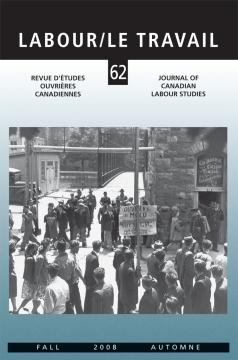Abstract
BASED UPON THE PAYROLL and personnel files from two mining companies in Kirkland Lake, the Lake Shore Gold Mines and the Wright-Hargreaves Mines, this paper examines the significance of absences from work during the years 1927 to 1943. Miners, the best paid industrial workers in Canada, were able to take advantage of the organization of work that included overtime and bonus. Taking in extra money while enjoying high salaries, miners could indulge in the practice of occasional absenteeism in the form of unpaid vacations and extended Sunday that amounted to creating the “weekend.” The pattern of absenteeism differed according to the mine, the occupation and the nature of the work, whether it was surface or underground. The practice, however, was in place well before the adoption of the two weeks’ paid vacation in Ontario in 1944 and the 40-hour workweek at the beginning of the 1950s. Absenteeism was not only a by-product of accidents, industrial disease or lay-offs. Miners could stay home simply because they wanted free time and freedom from owners and bosses.
